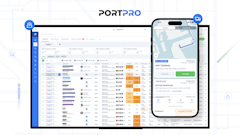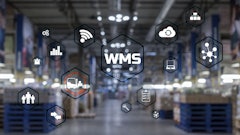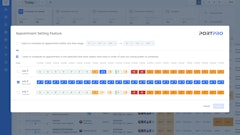
The food logistics industry experiences several struggles daily. The relentless pressure to deliver fresh, perishable goods efficiently and cost-effectively, while adhering to ever-tightening regulations is enough to leave even the most seasoned veterans feeling like hamsters on a wheel.
But it doesn't have to be this way. Just as technology has revolutionized nearly every other aspect, it holds the key to unlocking the potential and resilience of food logistics operations. The answer lies in embracing automation through transportation management systems (TMS).
Think of a TMS as your assistant to help manage the complexities of your freight network. No more tedious, error-prone manual processes. Instead, imagine orders effortlessly matched to ideal trucks and drivers, routes intelligently planned to minimize time and fuel, and real-time data at your fingertips to identify and address bottlenecks before they derail your deliveries.
This is not the future; its today’s reality waiting to be embraced. Let's be clear: a TMS isn't about replacing your team; it's about empowering them. Free them from the mundane tasks that stifle their potential and allow them to focus on what truly matters -- strategic planning, building strong supplier relationships, and driving innovation.
The benefits are tangible and undeniable. Reduced costs, increased efficiency, and improved customer satisfaction are just the tip of the iceberg. Imagine the competitive edge you'll gain with optimized deliveries, minimized fuel consumption, and a proactive approach to regulatory compliance.
The food logistics landscape is at a crossroads. Embrace automation, and you'll navigate the challenges with agility and grace. Resist, and you risk getting left behind. Don't let the team and your business become casualties of progress.
The road to automation begins with the right TMS selection. It's not a one-size-fits-all solution, so taking the time to analyze your unique needs and challenges is paramount. Do you primarily deal with LTL shipments? What's your fleet size and composition? What level of data integration do you require? Asking these questions upfront will guide you towards TMS solutions tailored to your specific freight network.
Don't be afraid to research and compare different options, seeking input from industry experts or software review sites. Engage in live demos to experience the software firsthand and ensure it seamlessly integrates with existing infrastructure. Remember, the ideal TMS is a collaborative partner, not a technological imposition.
Finally, prioritize implementation support and training. A smooth and fast onboarding process is crucial for maximizing your ROI and ensuring your team feels confident and empowered to navigate the new system.
By taking these steps, you'll set yourself and the organization up for success, leaving behind manual processes and allowing you to focus on more strategic growth. Remember, embracing automation isn't just a trend; it's a necessity for survival in today's competitive landscape.






![2023 Top Software Color[vertical]](https://img.foodlogistics.com/files/base/acbm/scn/image/2023/10/2023_TopSoftware_color_vertical_.653a8505cd258.png?auto=format%2Ccompress&bg=fff&fill-color=fff&fit=fill&h=135&pad=5&q=70&w=240)












![Top Tech Logo Vertical [black]](https://img.foodlogistics.com/files/base/acbm/scn/image/2023/09/top_tech_logo_Vertical__black_.650b43c676e81.png?auto=format%2Ccompress&fit=crop&h=135&q=70&w=240)






